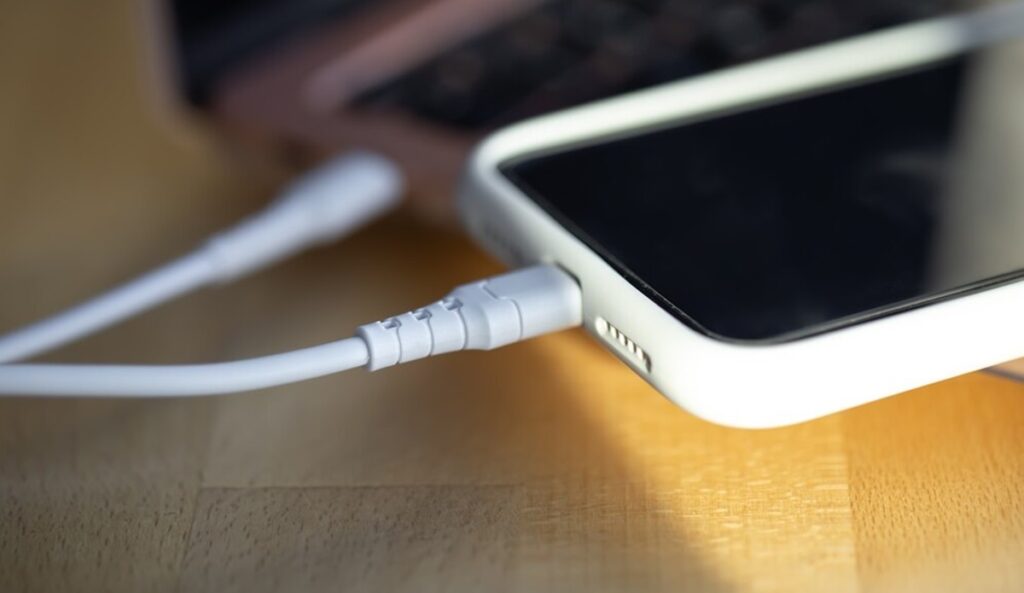
The sight of a lifeless phone screen, stubbornly refusing to respond to your charger’s embrace, can send shivers down anyone’s spine. According to USB ORG study, USB Type-C connectors have revolutionized device connectivity by offering a smaller, reversible design that can transmit both data and power efficiently. But what happens when that vital cord goes rogue, leaving your devices gasping for power? Fear not, fellow tech adventurer! This guide will equip you with the knowledge to diagnose and conquer a non-charging USB-C cable, ensuring your devices stay powered up for the adventures ahead.
Unveiling the Culprit: A Step-by-Step Approach
Before diving into complex solutions, let’s address the low-hanging fruit. Here’s a structured approach to pinpoint the culprit behind your charging woes:
- The Power of Connection: This might seem obvious, but ensure both ends of the cable are firmly plugged in. Remember, USB-C connectors are reversible, so double-check for a secure fit at both the device and charger ends.
- Cleanliness is Key: Dust, pocket lint, and other debris can accumulate in the charging port, hindering a proper connection. Grab a can of compressed air and gently blow out any visible dust bunnies. Remember: Never use sharp objects or water to clean the port, as this can damage delicate internal components.
- The Compatibility Conundrum: Not all USB-C cables are created equal. While the connector itself might be universal, some cables lack the necessary power delivery capabilities for certain devices. Consult your device’s user manual to ensure you’re using a cable that meets the required wattage for efficient charging. For example, a low-wattage cable might struggle to charge a power-hungry gaming laptop.
- The Charger Charade: Just like cables, chargers can be the source of the problem. Try using a different charger with a known-working cable. This will help isolate whether the issue lies with the cable or the power source itself.
- Power Play: Is the wall outlet you’re using functional? Try plugging the charger into a different outlet or a power strip to eliminate the possibility of a faulty power source.
Discover now: What is Display Over Other Apps? Boost Your Mobile Multitasking
Beyond the Basics: Digging Deeper
If you’ve meticulously followed the steps above and your USB-C cable remains uncooperative, here are some additional considerations:
- Software Blues: Believe it or not, software glitches can sometimes affect charging functionality. Try restarting your device. Additionally, check for any available software updates that might address charging-related bugs.
- Cable Construction Matters: Cheap, poorly constructed cables are more prone to damage, especially at the stress points near the connectors. Invest in a good quality cable from a reputable brand. Look for braided cables that offer enhanced durability compared to standard plastic ones.
- The Invisible Enemy: Damage to the cable itself might not always be readily apparent. Inspect the cable for any visible fraying, cuts, or kinks. These can compromise the internal wiring and disrupt the flow of electricity.
- The Port Predicament: In rare instances, the problem might lie with the device’s charging port itself. If none of the previous solutions work, consider seeking professional help for a port inspection or repair. This is especially true if you suspect physical damage to the port, such as bent pins.
Pro Tips for Peak Performance
- Bend It Like Beckham (Not Your Cable): Avoid putting excessive stress on the cable by constantly bending it at sharp angles. This can damage the internal wiring over time.
- Taming the Cable Monster: Proper cable management goes a long way in preventing wear and tear. Invest in cable organizers or wraps to keep your cables neat and tidy.
- The Power of Prevention: When disconnecting the cable, pull from the connector head rather than the cable itself. This reduces strain on the delicate connection points.
In Conclusion
By following these steps and keeping these pro tips in mind, you’ll be well-equipped to diagnose and troubleshoot a non-charging USB-C cable. Remember, a little detective work can save you the frustration of a powerless device and keep you connected to the digital world.
Bonus: Embrace the Wireless Revolution!
While tackling cable woes might be inevitable at times, consider exploring wireless charging solutions for your compatible devices. This eliminates the need for fiddling with cables and reduces wear and tear on both the cable and the charging port.

